33 Antarctic Species We Love and Must Protect: Part 3
Eleven days from now, on Oct. 20, the Commission for the Conservation of Antarctic Marine Living Resources (CCAMLR) will begin deliberating proposals to create large-scale marine reserves in the Ross Sea and the waters off East Antarctica. The commission, which consists of 24 countries and the European Union, must reach full consensus on these conservation measures. If established, the reserves would be among the largest protected areas in the world—on land or sea.
In anticipation of the meeting, The Pew Charitable Trusts, along with our partners at the Antarctic Ocean Alliance, are counting down 33 Antarctic Species We Love and Must Protect.
These final 11 species are a small sample of the fascinating invertebrates, fish, birds, and mammals that call the Southern Ocean home. All of the 33 species highlighted in our countdown play an important role in the Antarctic food web and are critical to ecosystem health and productivity.
Most importantly, they all need protection now. It is time for CCAMLR to act.
11. Crabs
Because of its cold water, the Antarctic is not known for its crustacean abundance. However, a few species, such as the king crab, have flourished. New species are still being discovered, such as a deep-sea yeti crab. Recognized by its hairy chest, it’s been nicknamed “the Hoff,” after actor David Hasselhoff.
10. Colossal squid
Despite its size, the colossal squid is one of the most elusive animals in the Southern Ocean. The world’s largest invertebrate, it can live more than 2,000 meters (1.2 miles) deep and can weigh as much as 500 kilograms (1,100 pounds). Although we know that the squid is an apex predator that feeds on species such as Antarctic toothfish, it remains enveloped in mystery.
9. Salp
Salps are clear, gelatinous filter feeders that sit low in the food web. However, their waste is critical to the Southern Ocean ecosystem. Their fecal pellets contain nitrogen and carbon, which fall into the deep sea and serve as a valuable nutrient source for creatures on the seafloor.
8. Sea spiders
There are more than 200 types of sea spiders in Antarctic and sub-Antarctic waters. Atypical arachnids, their bodies are much smaller and thinner than land spiders, and some species, such as the Colossendeis megalonyx, can reach 50 centimeters (19.6 inches) across.
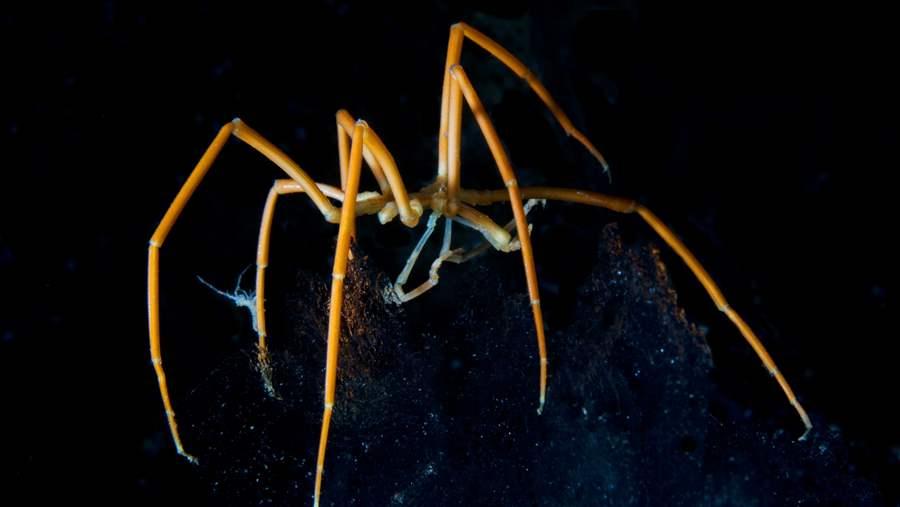 © John B. Weller
© John B. Weller
7. Lanternfish
As their name implies, lanternfish carry their own light source, in the form of bioluminescent organs called photophores. These organs aren’t actually used to light the water around them though, but are hypothesized to play a role in communicating with other lanternfish and in confusing predators.
6. Bone-eating worms
Bone-eating worms are found all over the world, where they seek out fallen whale and fish bones. They lack sharp teeth and other body parts that can cut through bone. Instead they produce acids that break down the bone and then rely on bacteria to turn it into nutrients.
5. Wandering albatross
The wandering albatross has the largest wingspan of any living bird: 2.5 to 3.5 meters (8 to 11.15 feet). Because they are enormous, these birds can remain in the air, soaring, for many hours without flapping their wings. Unfortunately, they are often caught as bycatch in toothfish fisheries and are listed as Vulnerable on the International Union for Conservation of Nature’s Red List of Threatened Species.
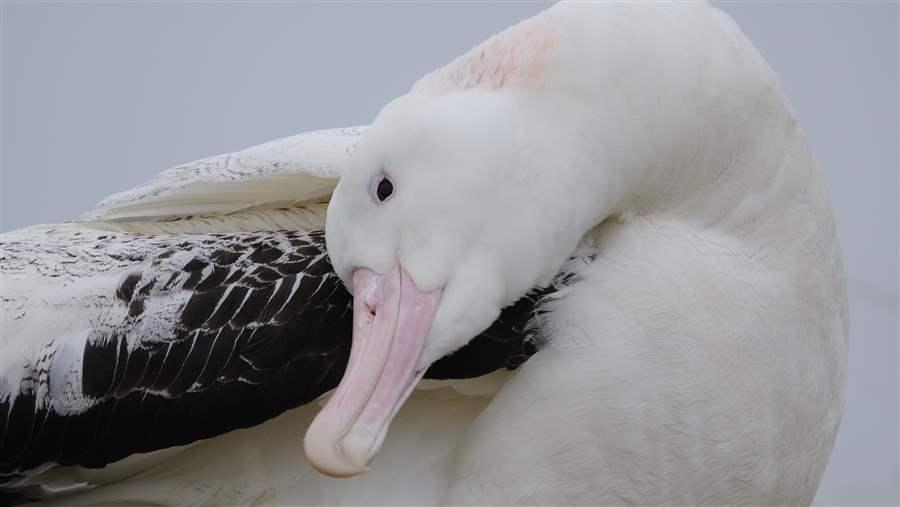 © Carl Safina
© Carl Safina
4. Adélie penguin
Adélie penguins may be the smallest Southern Ocean penguin, but they have a huge range along the entire Antarctic coast and on some nearby islands. Because they are heavily dependent on sea ice for breeding and foraging and are sensitive to changes in the ecosystem, they are often seen as sentinels of the overall health of the Southern Ocean.
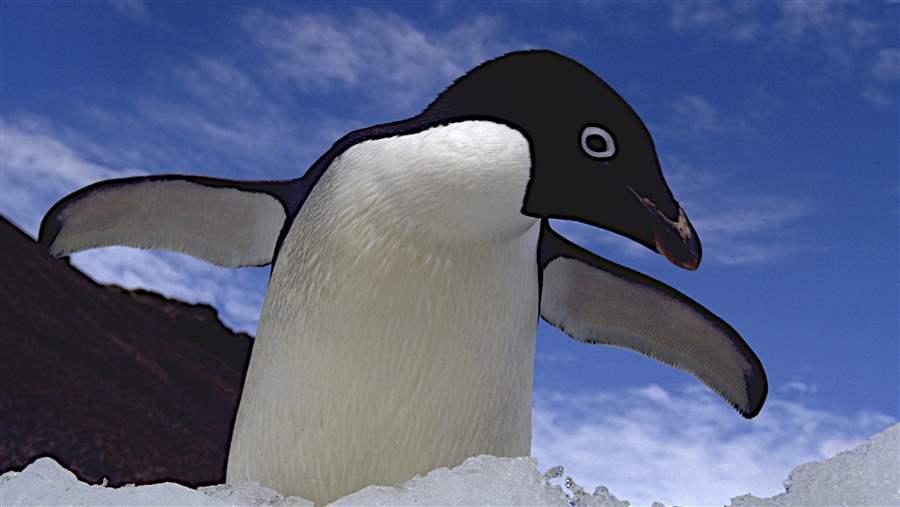 © Ron Naveen/OCEANITIES
© Ron Naveen/OCEANITIES
3. Leopard seal
Leopard seals are at the top of the Southern Ocean food web and are preyed on only by killer whales. With massive jaws, big eyes, and lithe bodies, they are ideally suited for stalking, hunting, and grabbing prey. They are solitary animals, and only females and pups are seen in pairs. And although they are not easily disturbed by humans, they are very curious and have been known to approach and grasp people.
2. Orca
Orcas, also known as killer whales, are second only to the sperm whale in brain weight among animals. They use their large brains for effective hunting, such as when they work as a group to “wave wash” Weddell seals off of ice floes, causing them to fall into the sea, where they are quickly eaten by the hunting pack of orcas.
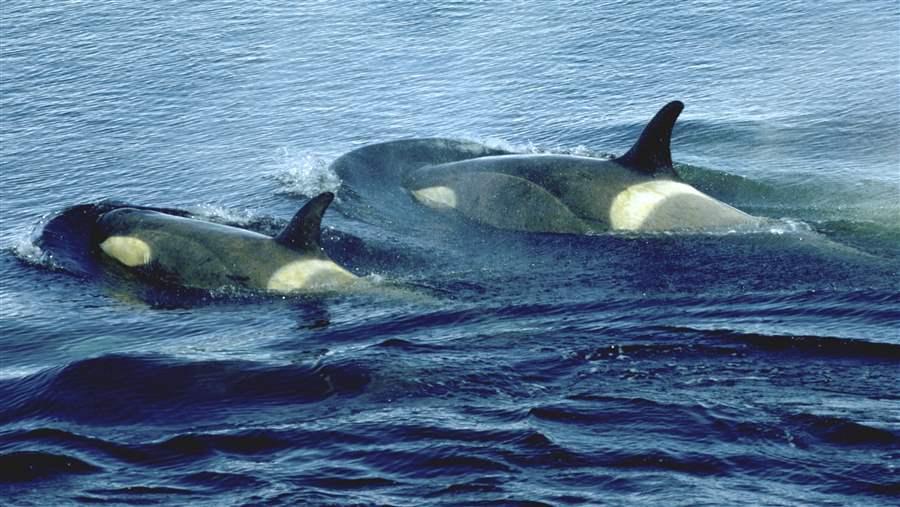 © Ron Naveen/OCEANITIES
© Ron Naveen/OCEANITIES
1. Antarctic krill
Antarctic krill are the last species in our countdown, and some might say most important, because they are central to the functioning of the Antarctic ecosystem. Everything from small fish to huge whales depend on krill for survival. Found in huge swarms numbering into the billions, they eat plankton or algae, and transfer this energy to species higher in the food web.
Development of the krill fishery was the main reason CCAMLR was established, but its management is still hampered by poor data collection and fails to take into account the needs of predators. This year, CCAMLR has the opportunity to better protect Antarctic krill and help secure the health of this amazingly diverse ecosystem. The fishery management plan should move krill fishing out of breeding penguins’ foraging areas and require 100 percent observer coverage on krill vessels.
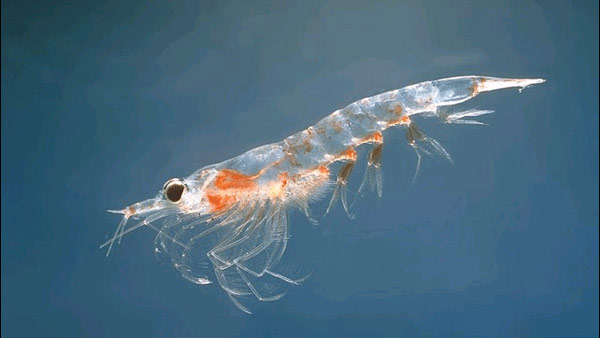 © Oystein Paulsen/MAR-ECO Project
© Oystein Paulsen/MAR-ECO Project
Did you miss any of the other species? Visit Part 1 and Part 2.






